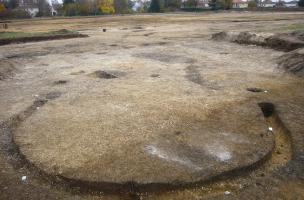You are here
Bergerac, first Neolithic village in the South-West of France
A team from the National Inrap is at present excavating the remains of a Neolithic village in the Vaures quarter of Bergerac. While the Bergerac region is well-known for high quality flints widely exploited during Prehistory, Neolithic dwellings in the area, on the contrary, are little known. The excavation is curated by the Regional Archaeology Service (DRAC Aquitaine).
The discovery of more than twenty dwellings over an area of an hectare and a half has just filled this gap. They all date from the Late Neolithic period, circa 3500-3000 BC. These houses have a rectangular floor plan with convex extremities, and are from 15 to 25 metres long by 4-5 metres wide, resting on sill-beams whose imprints are still visible.
Their pitched roofs were probably made of organic materials. There are enough dwellings to have formed a village. Not all the structures are of the same period: new houses cut across more ancient buildings, yet others have a different alignment.
Bergerac, made of earth and wood
At present, a long kiln, containing heated stones, whose plan and organisation are unique in French Late Prehistory, is being excavated.
What do we know of the Neolithic dwellings of the South-west of France?
The discovery of the Bergerac Neolithic village results from an improvement in excavation techniques, large-scale excavation and the broader research exploration of valleys by preventive archaeology.
An excavation of national research significance

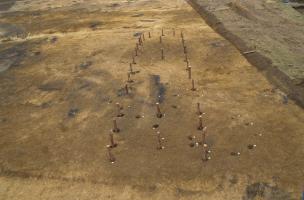
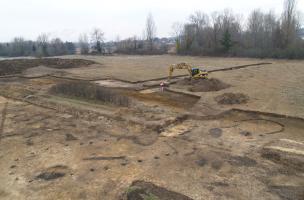
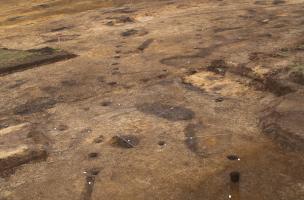
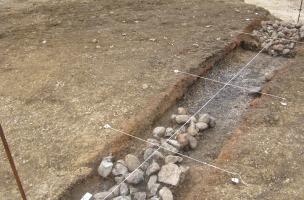
Mahaut Tyrrell
Media communication
Inrap, media partnerships and relations department
+33 (0)1 40 08 80 24
mahaut.tyrrell [at] inrap.fr


